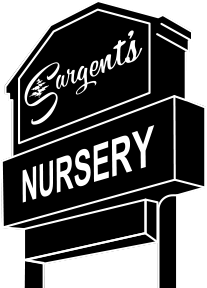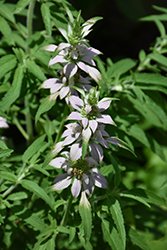Plant Height: 24 inches
Flower Height: 3 feet
Spacing: 30 inches
Sunlight:
![]()
![]()
Hardiness Zone: 3
Other Names: Dotted Mint, Dotted Horsemint, Bee Balm
Description:
This wildflower variety produces pretty clusters of yellow flowers with purple spots, surrounded by pinkish-purple leafy bracts; best in well drained, dry to medium sandy soil; needs good air circulation; great for massing along borders and naturalizing
Ornamental Features
Spotted Beebalm has masses of beautiful clusters of fragrant yellow flowers with purple overtones and fuchsia bracts at the ends of the stems from early to mid summer, which are most effective when planted in groupings. The flowers are excellent for cutting. Its fragrant narrow leaves remain green in color throughout the season.
Landscape Attributes
Spotted Beebalm is an herbaceous perennial with a mounded form. Its medium texture blends into the garden, but can always be balanced by a couple of finer or coarser plants for an effective composition.
This plant will require occasional maintenance and upkeep. Trim off the flower heads after they fade and die to encourage more blooms late into the season. It is a good choice for attracting bees, butterflies and hummingbirds to your yard, but is not particularly attractive to deer who tend to leave it alone in favor of tastier treats. Gardeners should be aware of the following characteristic(s) that may warrant special consideration;
- Spreading
- Self-Seeding
Spotted Beebalm is recommended for the following landscape applications;
- Mass Planting
- General Garden Use
- Naturalizing And Woodland Gardens
Planting & Growing
Spotted Beebalm will grow to be about 24 inches tall at maturity extending to 3 feet tall with the flowers, with a spread of 3 feet. When grown in masses or used as a bedding plant, individual plants should be spaced approximately 30 inches apart. It grows at a fast rate, and under ideal conditions can be expected to live for approximately 5 years. As an herbaceous perennial, this plant will usually die back to the crown each winter, and will regrow from the base each spring. Be careful not to disturb the crown in late winter when it may not be readily seen!
This plant does best in full sun to partial shade. It prefers dry to average moisture levels with very well-drained soil, and will often die in standing water. It is not particular as to soil pH, but grows best in sandy soils. It is highly tolerant of urban pollution and will even thrive in inner city environments. This species is native to parts of North America.
How can we help?
We encourage you to visit the garden center to explore our full offerings and connect with our team of experts. Our team is on hand to help with any questions you have, and can help you with memorials, deliveries, special orders, and tree planting and more…




